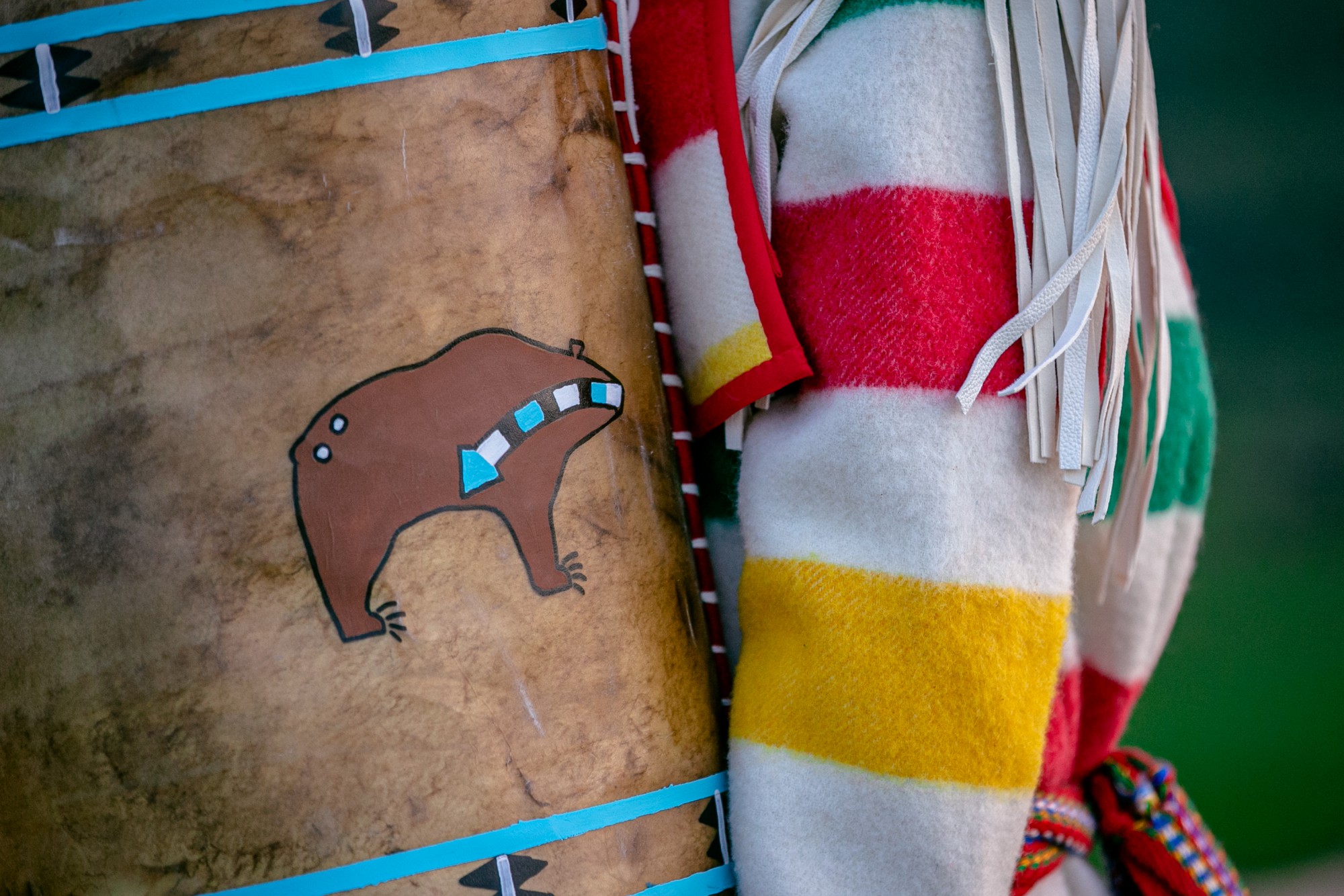
Lethbridge College is proud to unveil a new Indigenous logo for its home court – the first institution in the Canadian Collegiate Athletic Association (CCAA) to incorporate Indigenous culture in its gymnasium floor design.
The new design of the gym includes the familiar fierce Kodiak bear at the centre, but it is now surrounded by a number of meaningful Indigenous images, designs and words. The design will also be worked into future uniforms for student-athletes.
Throughout the gym, “you’ll see the traditional representation of our mountains and the teepee – our lodges,” explains Lowell Yellow Horn (Spiitawakasi/Tall Deer), a member of the Piikani First Nation and the college’s Indigenous Services Manager. He adds the design reflects the idea that “this is our lodge – the Kodiaks’ lodge, and really brings it home for our student-athletes that this is a place of belonging.”
Fans in the Val Matteotti Gymnasium will also see the word Aikowania (ay-GO-aww-nya) on one side of the court next to the painted drawing of a bear. Aikowania refers to body awareness and movement – the strength, stamina and sharp mind needed to be able to spring into action at a moment’s notice. It is the essence of readiness, and something all Kodiaks (and Lethbridge College community members) can strive for.
“Aikowania is at the heart of all our Kodiaks student-athletes want to accomplish, both on and off the court, field and trail,” says Todd Caughlin, manager of Kodiaks Athletics. “It reminds all of us to be aware, and to be ready for what happens next. Whether we are talking about the tipoff of a basketball game, the extension of a bow while hunting food for winter, or the start of a final exam, we are stronger and more successful when our minds are sharp and our bodies ready to act. And – as we like to say around here – it also reminds us that we are all Kodiaks.”

The drawing of the bear, created by Blackfoot artist Monte Eagle Plume, is purposefully not lifelike, says Yellow Horn, as the Blackfoot people believe that making something too lifelike will give it a spirit and make it come alive.
The arrow starting at the mouth of the bear represents the lifeforce of the animal, and all that it uses to sustain itself - the food it eats, the air it breathes and the water it tastes. The white dots represent the kidneys, one of the organs the Blackfoot people believe are the source of the supernatural power the animal possesses.
On the other side of the court are the words “Welcome to Ohkotoki'aahkkoiyiiniimaan,” which refers to the college’s Blackfoot name, Stone Pipe.
All of these taken together, Yellow Horn explains, are a way “to remind the athletes to carry themselves in a good way and are representative of what it means to be a Kodiak.”
The refinished hardwood compliments the gymnasium walls, which got a fresh coat of blue paint a few summers back. Upgrades have also been made to the gym’s lighting, scoreboards, sound and video equipment and Alberta Colleges Athletic Conference honour wall in recent years. New bleachers are in the works for next summer.
"Honouring and acknowledging the traditional lands of the Blackfoot people by incorporating these important symbols on the floor and throughout the facility is both a dream come true and a constant reminder of our ongoing commitment,” says Caughlin. “It is a commitment our entire college has made and it reflects our promise to every student who has passed through our doors, past, present and future."